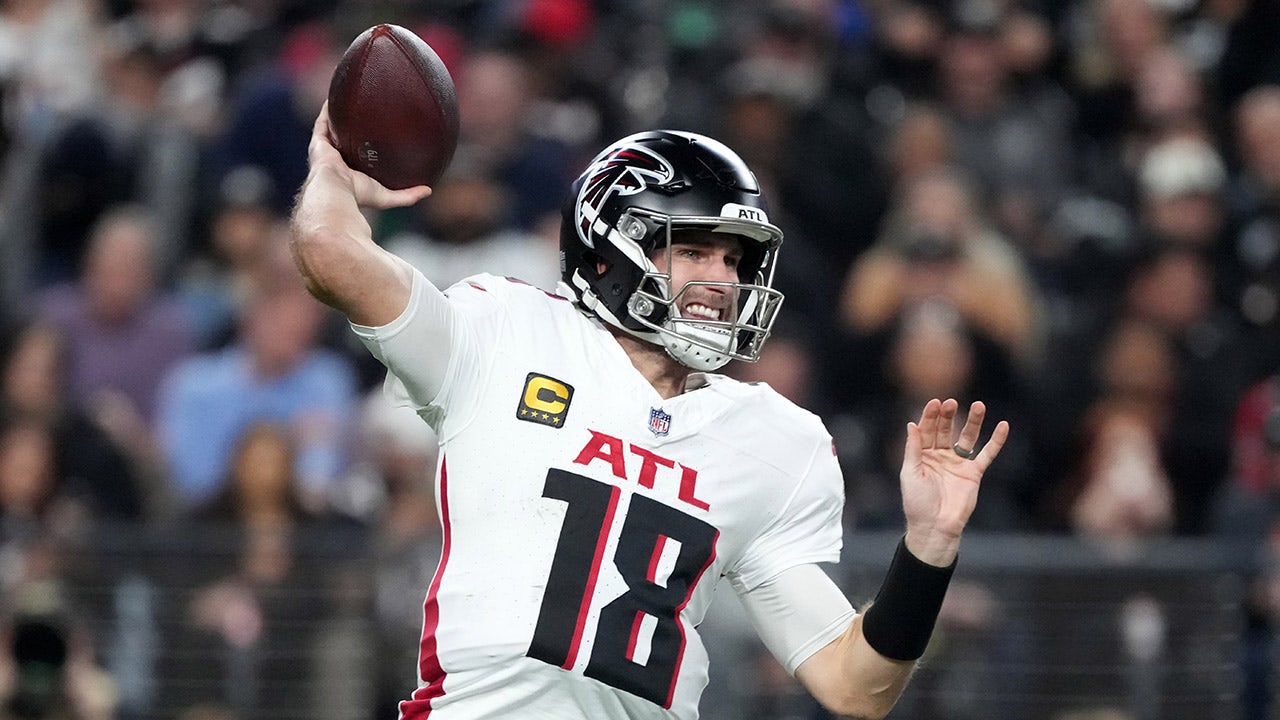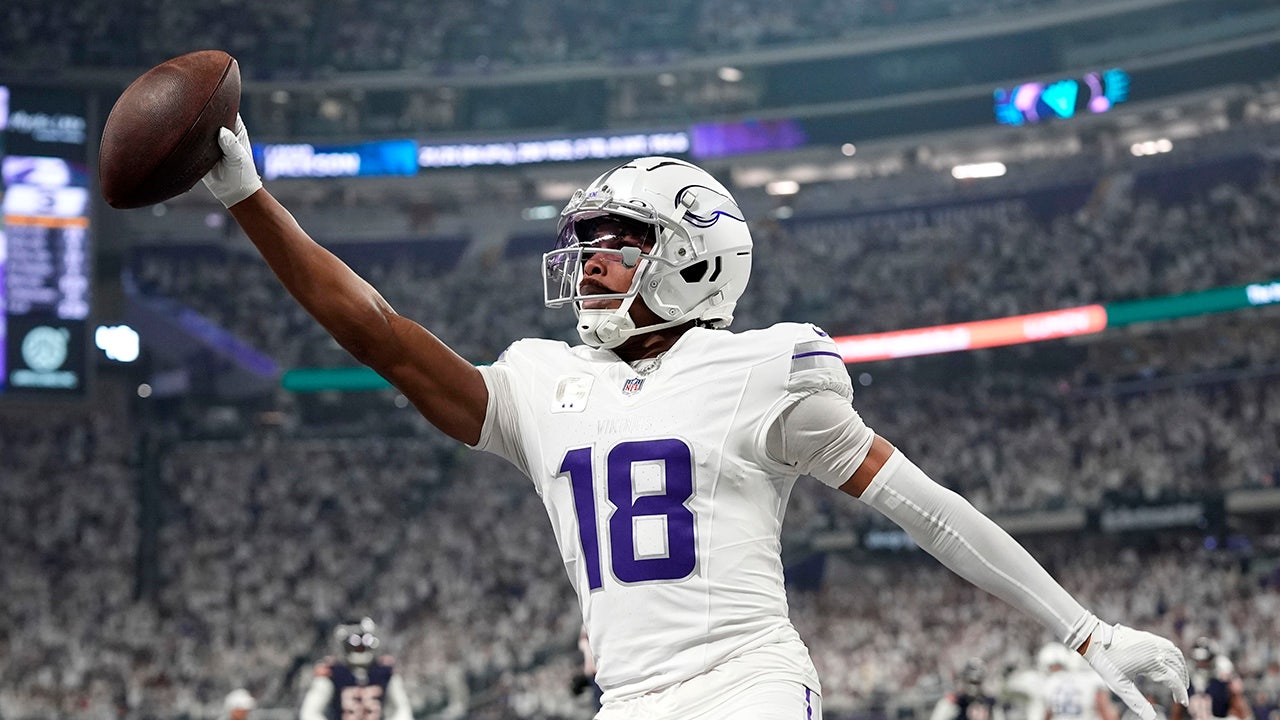McFarlane Toys has made the artist behind Spawn a favorite among collectors — and an indie magnate.
And boy, are there toys — more toys here than you ever thought could fit into a corporate office, down to the Juwan Howard sports figure in a Denver Nuggets uniform.
There’s also his own collection of accolades, relics and sports memorabilia marking off the wild journey McFarlane’s art and imagination have taken him on throughout his career. The entryway’s Emmy awards for the HBO animated series “Spawn” (based on his comic of the same name). Plus a Grammy for Korn’s 1999 music video for “Freak on a Leash” (which McFarlane directed). Enter McFarlane’s office and the large digital drawing tablet on his desk is flanked by a framed photo of him and hockey legend Wayne Gretzky on the wall, from back when McFarlane was a minority owner of the Edmonton Oilers (he sold a lot of Spawn comics in the ’90s), and football cleats given to him by NFL Hall of Fame running back LaDainian Tomlinson.
McFarlane is still the president of Image Comics, the publisher he co-founded with a who’s who of ’90s comic talent in 1992, and a firm believer in the company’s mission: to allow comic creators to own what they create and reap the benefits of it, should Hollywood or other business ventures come calling for their universes. And he’s still making comics. His Spawn series has expanded into a universe of three other titles, “King Spawn,” “Gunslinger Spawn” and “The Scorched,” which are all published in collaboration with Image and his company Todd McFarlane Productions.
But for all the comics produced, awards, celebrity photos and millions made and spent (don’t forget McFarlane once purchased Mark McGwire’s 70th home run ball for $3 million), if you’ve seen McFarlane lately on social media, chances are he has an action figure in his hand and is telling you where you can buy it. McFarlane the toymaker has become just as big a deal as McFarlane the comic book maker.
“When you’re successful at something, at times people will say you’ve lost your way and you’re money-grubbing,” McFarlane told The Washington Post inside the McFarlane Toys offices. “I succeed at business not to be rich and famous; I succeed at business so I can keep doing art,” he added. “If you think you’re going to do art for 50 years at any meaningful level and not be successful at it, it will never happen.”
McFarlane takes his “freedom” from the “big two,” Marvel and DC, quite seriously. He’s quick to note he’s never gone back to draw a single page for Marvel since he helped start Image. As a co-creator of Venom, one of Marvel’s most popular characters and the star of multiple Sony movies, McFarlane said he was asked frequently to come back and illustrate covers featuring the character. He declined every time. His only contribution to DC since? Two Batman/Spawn crossovers.
“The freedom part is the most important because if I can’t, I’m going to have to go back working for a company and I don’t know that I have that muscle in me anymore,” he said. “So that’s why I have to succeed so I can keep doing it.”
McFarlane Toys will celebrate its 30th anniversary in 2024. The origin story, according to McFarlane, goes like this: He set up a booth at New York Toy Fair armed only with artwork from his newly created Spawn comics. A Toys R Us executive walked by his prototype-less table without a second glance. But the executive’s 20-something assistant recognized Spawn and mentioned to the executive that it was a sales juggernaut, outselling superheroes at DC and Marvel, where McFarlane was once a star drawing Batman, Wolverine and other characters.
That was enough for national distribution at Toys R Us chains nationwide, unheard of for someone so new to toy-making. And the more McFarlane’s toys sold, the more his particular brand of action figure got noticed by corporate America.
“Pretty soon, instead of me phoning them, me knocking on their door, me being the beggar all the time, the phone started ringing in the other direction,” McFarlane said.
McFarlane Toys was built on Spawn, but its growth over three decades came from acquiring the rights to produce multiple brands and sports leagues — including, at various times, “The X-Files,” the band Kiss, “Game of Thrones,” the NFL, NBA, MLB and NHL. A deal with Warner Bros. ropes in the DC Comics universe, including the moneymaker: Batman. There’s the Robert Pattinson version from “The Batman.” The Christian Bale version from “The Dark Knight” trilogy. There’s a blue-cowled Batman based on the classic “Knightfall” comics storyline of the ’90s, an Adam West Batman from the ’60s “Batman” television show and even a George Clooney Batman. And yes, there are Batfleck toys, too.
“Batman’s the king,” McFarlane said, regarding which DC action figure sells the most for him. “And then there’s everybody else.”
A staple of the McFarlane brand is the company’s ability to make an action figure look identical to the comic book panel or live-action movie it’s inspired from. Aquaman and Superman figures from the Zack Snyder Justice League era look like Jason Momoa and Henry Cavill. A Batman “White Knight” figure mirrors the comic book art of Sean Murphy. Spawn figures look as if they were drawn three dimensionally by McFarlane himself. That accuracy has garnered the company a loyal following of fanboys who commune online in social media groups buying, pricing, trading and critiquing all things McFarlane. Some figures list north of $100. The piece of technology most vital to that crafting success? McFarlane raised his hands to break down the syllables of his top-secret device.
“It’s called a CAM…ER…A,” McFarlane said slowly.
Before designing went mostly digital, that meant: Get a good camera. Use photo reference. Make the clay used to mold the toy look as much like the photo as possible. Repeat. McFarlane said that for decades, toys for collectors and children alike — especially toys meant to look like superheroes or popular athletes — rarely resembled their subjects. It used to anger him to see sports action figures that included a trading card with a photograph of the athlete — which just went to show they looked nothing alike.
“The question that blows my mind isn’t how did we add so much detail? How did we do so much realism? The question is, how did they not?” McFarlane asked. “They had the same tools as I had. Photography, photo reference, clay and knives, and they chose to ignore that and make bland, mediocre stuff. Thank the toy companies for being average when I got into it.”
The basis for a McFarlane figure is simple enough. If it can be drawn, it can be made. And it can be made to look like it was drawn. That is a common standard for any toy company today, but it wasn’t the norm when McFarlane first got into the business.
“My company got started on one simple question. Why can’t [toys] look cooler,” McFarlane said. “I let the big Fortune 500 companies sell to moms and the 6-year-olds. I was going for a different demographic. People who were collectors. People will say … you can’t sell [toys] to an adult. I can sell a toy to my mom, I just have to make it look like Tom Jones. As long as you’re doing the content properly, you can sell it.”
McFarlane is keenly aware that his action figures might not attract the young children who are so often the key demographic of toy-makers. And he’s absolutely fine with that. He’d rather have that kid as a customer for the rest of their lives a few years later.
“When you decide you’re going to be a geek, and for a lot of people that can actually come pretty early, it can start at like 8 or 9 … you will become a geek I think from 9 until death,” McFarlane said. “[Collectors] are going to be adults a lot longer than they’re going to be kids. I’ll take the 70 years they’re going to be an adult geek collector. You take them from ages 5 to 8.”
McFarlane considers every hour he’s not at his drawing board because of his growing toy business a missed creative opportunity. His only regret in becoming a toy man is that he doesn’t create as much per day as he once did, back when he would spend hours alone in a room, drawing. It’s a dampening of the process that made him who he is. But it’s a cutback on what he loves to do most that has a payoff.
“Why are you doing this,” McFarlane asks in regards to his toy business. “Because it’s just cool. And I can sell cool all day long.”















































